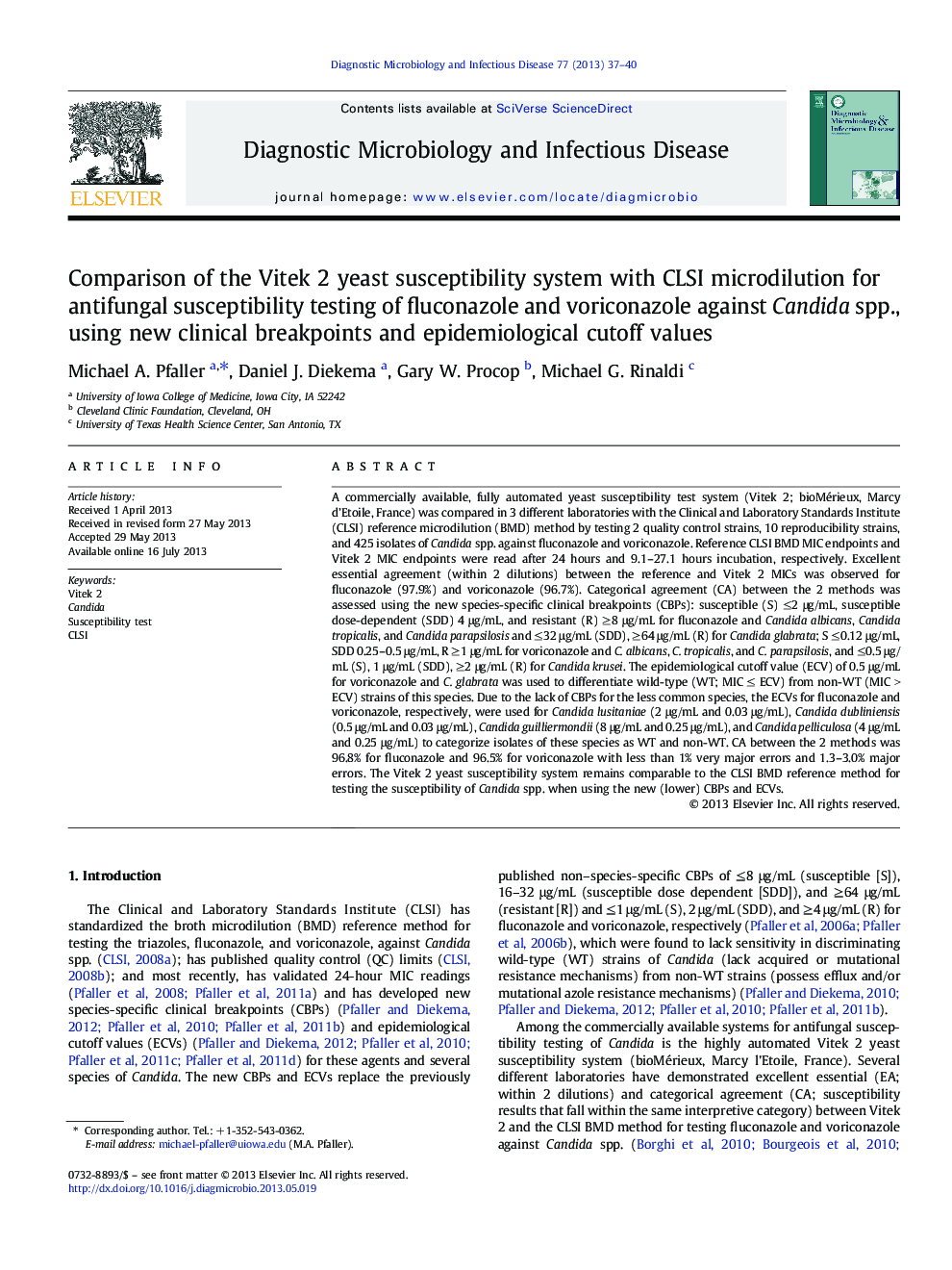| کد مقاله | کد نشریه | سال انتشار | مقاله انگلیسی | نسخه تمام متن |
|---|---|---|---|---|
| 3347170 | 1215941 | 2013 | 4 صفحه PDF | دانلود رایگان |

A commercially available, fully automated yeast susceptibility test system (Vitek 2; bioMérieux, Marcy d’Etoile, France) was compared in 3 different laboratories with the Clinical and Laboratory Standards Institute (CLSI) reference microdilution (BMD) method by testing 2 quality control strains, 10 reproducibility strains, and 425 isolates of Candida spp. against fluconazole and voriconazole. Reference CLSI BMD MIC endpoints and Vitek 2 MIC endpoints were read after 24 hours and 9.1–27.1 hours incubation, respectively. Excellent essential agreement (within 2 dilutions) between the reference and Vitek 2 MICs was observed for fluconazole (97.9%) and voriconazole (96.7%). Categorical agreement (CA) between the 2 methods was assessed using the new species-specific clinical breakpoints (CBPs): susceptible (S) ≤2 μg/mL, susceptible dose-dependent (SDD) 4 μg/mL, and resistant (R) ≥8 μg/mL for fluconazole and Candida albicans, Candida tropicalis, and Candida parapsilosis and ≤32 μg/mL (SDD), ≥64 μg/mL (R) for Candida glabrata; S ≤0.12 μg/mL, SDD 0.25–0.5 μg/mL, R ≥1 μg/mL for voriconazole and C. albicans, C. tropicalis, and C. parapsilosis, and ≤0.5 μg/mL (S), 1 μg/mL (SDD), ≥2 μg/mL (R) for Candida krusei. The epidemiological cutoff value (ECV) of 0.5 μg/mL for voriconazole and C. glabrata was used to differentiate wild-type (WT; MIC ≤ ECV) from non-WT (MIC > ECV) strains of this species. Due to the lack of CBPs for the less common species, the ECVs for fluconazole and voriconazole, respectively, were used for Candida lusitaniae (2 μg/mL and 0.03 μg/mL), Candida dubliniensis (0.5 μg/mL and 0.03 μg/mL), Candida guilliermondii (8 μg/mL and 0.25 μg/mL), and Candida pelliculosa (4 μg/mL and 0.25 μg/mL) to categorize isolates of these species as WT and non-WT. CA between the 2 methods was 96.8% for fluconazole and 96.5% for voriconazole with less than 1% very major errors and 1.3–3.0% major errors. The Vitek 2 yeast susceptibility system remains comparable to the CLSI BMD reference method for testing the susceptibility of Candida spp. when using the new (lower) CBPs and ECVs.
Journal: Diagnostic Microbiology and Infectious Disease - Volume 77, Issue 1, September 2013, Pages 37–40